Themed collection Celebrating the 150th anniversary of the German Chemical Society

Recent advances in crystal engineering
Recent advances and new trends in crystal engineering are highlighted with particular emphasis on developments in intermolecular interactions, notably hydrogen and halogen bonds; metal–organic frameworks; polymorphism and solvates.
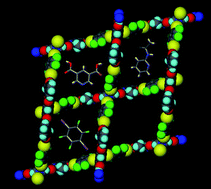
CrystEngComm, 2010,12, 22-43
https://doi.org/10.1039/B919819A
Gold—an introductory perspective
The reviews in this thematic issue of Chemical Society Reviews on gold chemistry are introduced and achievements in the field are reviewed.
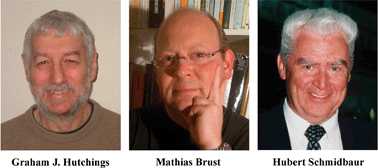
Chem. Soc. Rev., 2008,37, 1759-1765
https://doi.org/10.1039/B810747P
van der Waals dispersion interactions in molecular materials: beyond pairwise additivity
In this perspective we discuss recent advances in the understanding of collective and many-body van der Waals interactions and their role and impact for molecular materials.
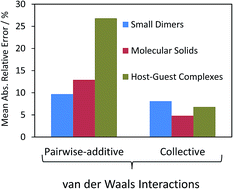
Chem. Sci., 2015,6, 3289-3301
https://doi.org/10.1039/C5SC00410A
The same and not the same: molecular perovskites and their solid-state analogues
We review the crystal chemistry and physics of molecular perovskites, drawing on topical examples of the recent literature.
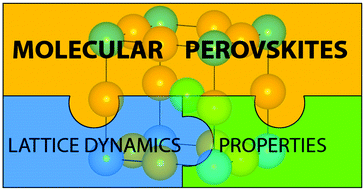
Mater. Horiz., 2017,4, 362-366
https://doi.org/10.1039/C7MH00107J
Expanding the toolbox of organic chemists: directed evolution of P450 monooxygenases as catalysts in regio- and stereoselective oxidative hydroxylation
Cytochrome P450 enzymes (CYPs) have been used for more than six decades as catalysts for the CH-activating oxidative hydroxylation of organic compounds with formation of added-value products.
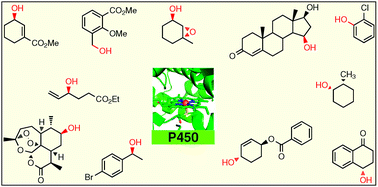
Chem. Commun., 2015,51, 2208-2224
https://doi.org/10.1039/C4CC09218J
Recent advances in the field of bioactive tetronates
Tetronate natural products display a range of remarkable bioactivities. This review provides a proposal for a classification system of tetronate antibiotics based on structural features and discusses common principals in biosynthesis and chemical syntheses. Finally, a comprehensive analysis of structure–activity relationships and modes of action is included.
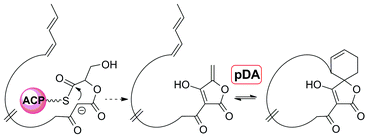
Nat. Prod. Rep., 2014,31, 1554-1584
https://doi.org/10.1039/C4NP00015C
Improving f-element single molecule magnets
Historical developments, trends, pitfalls and strategies in improving f-element single molecule magnets are described.
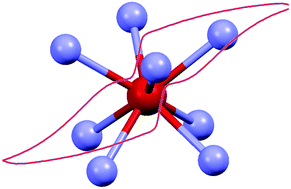
Chem. Soc. Rev., 2015,44, 6655-6669
https://doi.org/10.1039/C5CS00222B
Miniaturised nucleic acid analysis
The application of micro-total analysis systems has grown exponentially over the past few years, particularly in disciplines involving bioassays. This review aims to detail recent approaches to sample preparation, nucleic acid amplification and detection within microfluidic devices or at the microscale level.

Lab Chip, 2004,4, 534-546
https://doi.org/10.1039/B408850F
Pressing a spring: what does it take to maximize the energy storage in nanoporous supercapacitors?
Increasing the phobicity of pores towards ions can improve energy storage in nanoporous supercapacitors, and simultaneously increase the power density.
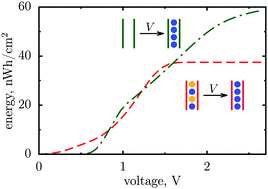
Nanoscale Horiz., 2016,1, 45-52
https://doi.org/10.1039/C5NH00004A
Electrochemical analysis of nucleic acids at boron-doped diamond electrodes
Analyst, 2002,127, 329-332
https://doi.org/10.1039/B111548K
Nanorings with copper(II) and zinc(II) centers: forcing copper porphyrins to bind axial ligands in heterometallated oligomers
The stability of copper/zinc heterometallated porphyrin complex oligomers provides information on the strength of the copper porphyrin pyridine interaction. Heterometallated nanorings were prepared by template-directed synthesis.
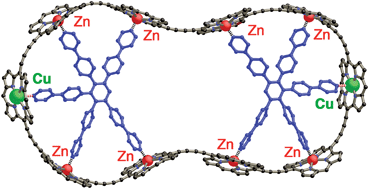
Chem. Sci., 2016,7, 6961-6968
https://doi.org/10.1039/C6SC01809B
DNA based multi-copper ions assembly using combined pyrazole and salen ligandosides
The pyrazole and salen ligandosides, when combined, are able to create stable multi-copper ion complexing DNA duplex structures in a cooperative fashion.
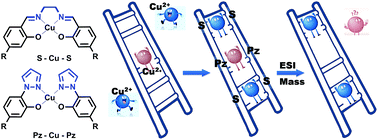
Chem. Sci., 2015,6, 632-638
https://doi.org/10.1039/C4SC01567C
Fullerene
crystallisation as a key driver of charge separation in polymer /fullerene bulk heterojunction solar cells
A functional model of charge generation in a finely mixed polymer/fullerene phase followed by spatial separation of electrons and holes at the interface with crystalline PCBM.
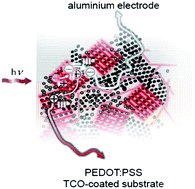
Chem. Sci., 2012,3, 485-492
https://doi.org/10.1039/C1SC00674F
Following the self assembly of supramolecular MOFs using X-ray crystallography and cryospray mass spectrometry
The self assembly of two gigantic supramolecular copper(II)-cis,trans-1,3,5-triaminocyclohexane based MOFs, directed by anion control, is probed by cryospray mass spectrometry.
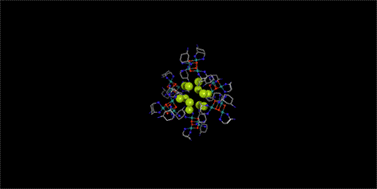
Chem. Sci., 2010,1, 62-67
https://doi.org/10.1039/C0SC00264J
On the benchmarking of multi-junction photoelectrochemical fuel generating devices
We discuss benchmarking considerations for multi-junction solar fuel absorbers and investigate the effects of spectral shaping by catalyst nanoparticles on design criteria.
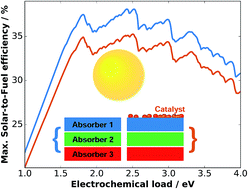
Sustainable Energy Fuels, 2017,1, 492-503
https://doi.org/10.1039/C6SE00083E
On the effect of wearing personal nanoparticle monitors on the comparability of personal exposure measurements
Wearing of personal monitors for nanoparticle exposure studies does not affect the measurement performance compared to laboratory studies.
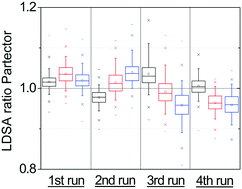
Environ. Sci.: Nano, 2017,4, 233-243
https://doi.org/10.1039/C6EN00362A
Selective, light-driven enzymatic dehalogenations of organic compounds
A reductive dehalogenase (PceA) adsorbed on TiO2 nanoparticles catalyzes regiospecific transformations of chlorinated ethenes under UV irradiation.
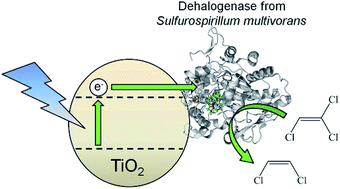
RSC Adv., 2016,6, 84882-84886
https://doi.org/10.1039/C6RA19777A
Shock wave and modeling study of the reaction CF4 (+M) ⇔ CF3 + F (+M)
The thermal decomposition of CF4 (+Ar) → CF3 + F (+Ar) was studied in shock waves over the temperature range 2000–3000 K. The experiments were shown to correspond to the central part of the falloff curve.
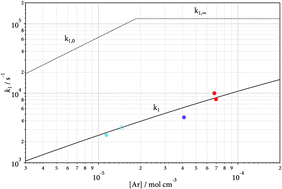
Phys. Chem. Chem. Phys., 2016,18, 17592-17596
https://doi.org/10.1039/C6CP03010F
On the Gaussian approximation in colloidal hard sphere fluids
We study the full spatial and time dependence of the self-intermediate scattering function, Fs(k,t), for a quasi-two-dimensional colloidal hard sphere fluid and quantify the deviations from the Gaussian approximation.

Soft Matter, 2016,12, 4129-4134
https://doi.org/10.1039/C5SM03049H
Continuous flow Buchwald–Hartwig amination of a pharmaceutical intermediate
A flow process for direct amination of a pharmaceutically relevant substrate using a Pd-NHC based catalyst was demonstrated in a lab-scale mini-plant and in a pilot-scale plant.

React. Chem. Eng., 2016,1, 229-238
https://doi.org/10.1039/C5RE00048C
Compositional dependence of anomalous thermal expansion in perovskite-like ABX3 formates
Thermal expansion in ABX3 formates is correlated to the size and molecular anisotropy of the A- and B-site cations.
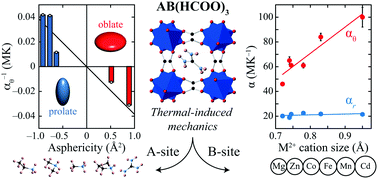
Dalton Trans., 2016,45, 4169-4178
https://doi.org/10.1039/C5DT03263F
Direct observation of an inhomogeneous chlorine distribution in CH3NH3PbI3−xClx layers: surface depletion and interface enrichment
X-ray spectroscopies have shown a higher chlorine concentration near the perovskite/TiO2 interface than throughout the rest of the perovskite film.
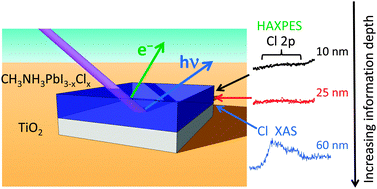
Energy Environ. Sci., 2015,8, 1609-1615
https://doi.org/10.1039/C5EE00403A
Ionic liquids: not always innocent solvents for cellulose
A comprehensive investigation into the limitations, reactivity and chemical decomposition mechanisms of ionic liquid–carbohydrate mixtures.
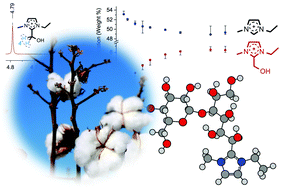
Green Chem., 2015,17, 231-243
https://doi.org/10.1039/C4GC01955E
Correlating the transition dipole moment orientation of phosphorescent emitter molecules in OLEDs with basic material properties
The orientation of seven iridium-based emitter molecules for OLEDs is compared and surprisingly all except Ir(ppy)3 show considerable horizontal orientation.
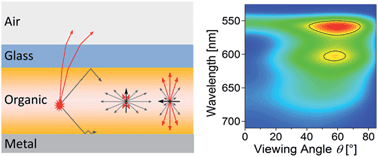
J. Mater. Chem. C, 2014,2, 10298-10304
https://doi.org/10.1039/C4TC00997E
Ruthenium-catalyzed C–H/O–H and C–H/N–H bond functionalizations: oxidative annulations of cyclopropyl -substituted alkynes
Ruthenium-catalyzed syntheses of cyclopropyl-substituted isocoumarins and isoquinolones were accomplished through highly chemo-, site- and regioselective C–H/O–H and C–H/N–H bond functionalizations with cyclopropylacetylenes.

Org. Biomol. Chem., 2013,11, 142-148
https://doi.org/10.1039/C2OB26250A
Dopant-induced 2D–3D transition in small Au-containing clusters: DFT-global optimisation of 8-atom Au–Ag nanoalloys
A Genetic Algorithm-DFT approach is used to predict the composition-dependent interconversion between 2D and 3D isomers for 8-atom Au–Ag clusters.
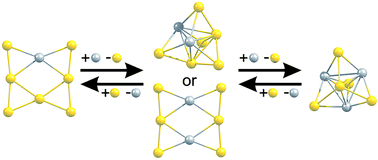
Nanoscale, 2012,4, 1109-1115
https://doi.org/10.1039/C1NR11053E
Oxidative cascade reactions yielding polyhydroxy-theaflavins and theacitrins in the formation of black tea thearubigins: Evidence by tandem LC-MS
We have characterised black tea thearubigins using standard and advanced analytical techniques and confirmed the oxidative cascade hypothesis for thearubigins formation showing evidence for theaflavin and theacitrin polyhydroxylation and quinone formation.

Food Funct., 2010,1, 180-199
https://doi.org/10.1039/C0FO00066C
“A posteriori” modification of carbosilane dendrimers and dendrons: their activation in core and branch positions
The acidolytic activation of phenylated carbosilane dendrimers allows the selective functionalization of core, branch and end group positions.
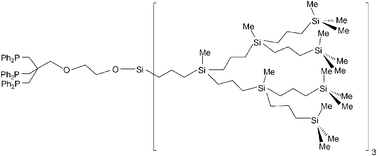
Dalton Trans., 2005, 1394-1402
https://doi.org/10.1039/B501069A
Electro-oxidation of carbon monoxide and methanol on bare and Pt-modified Ru(10![[1 with combining macron]](https://www.rsc.org/images/entities/char_0031_0304.gif) 0) electrodes
0) electrodes
Relating surface structure/morphology of Pt overlayers electrochemically grown on Ru(10![[1 with combining macron]](https://www.rsc.org/images/entities/char_0031_0304.gif) 0) to catalytic activity towards electro-oxidation of small organic molecules?
0) to catalytic activity towards electro-oxidation of small organic molecules?
![Graphical abstract: Electro-oxidation of carbon monoxide and methanol on bare and Pt-modified Ru(10 [[1 with combining macron]] 0) electrodes](/en/Image/Get?imageInfo.ImageType=GA&imageInfo.ImageIdentifier.ManuscriptID=B411467A&imageInfo.ImageIdentifier.Year=2005)
Phys. Chem. Chem. Phys., 2005,7, 1300-1309
https://doi.org/10.1039/B411467A
Towards promising oxoanion extractants: azacages and open-chain counterparts
The efficiency of a series of amino-azacryptands for encapsulation and extraction of the oxoanions pertechnetate and perrhenate from aqueous solution is investigated and compared with that of their open-chain counterparts. The extractabilities could not be explained solely on the basis of ligand lipophilicity.
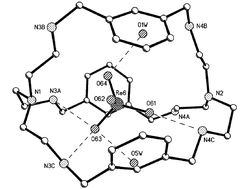
Dalton Trans., 2003, 1961-1968
https://doi.org/10.1039/B210289G
The first silyl- and germylboryl complexes: synthesis from novel (dichloro)silyl- and (dichloro)germylboranes, structure and reactivity
A series of silyl- and germylboryl complexes of the type A and B (E = Si, Ge; R = various ligands) was obtained from the novel dichloroboranes Cl2B–ER3 and fully characterised, which, despite the electron deficiency of the boron centres, exhibit no metal–boron π-bonding in solution or in the crystal.
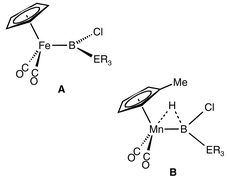
J. Chem. Soc., Dalton Trans., 2002, 2289-2296
https://doi.org/10.1039/B201100J
Coordinatively unsaturated ruthenium allenylidene complexes: highly effective, well defined catalysts for the ring-closure metathesis of α,ω-dienes and dienynes
Superior amine catalysts for the Baylis–Hillman reaction: the use of DBU and its implications†
A variety of combinatorially linkable units as disposition:† from a giant icosahedral Keplerate to multi-functional metal–oxide based network structures
Structural studies on amorphous silicon boron nitride Si3B3N7: neutron contrast technique on nitrogen and high energy X-ray diffraction
Detecting a transition-metal ammine at tailored surfaces
Pulse-radiolysis studies on the oxidised form of the multicopper enzyme ascorbate oxidase: evidence for two intramolecular electron-transfer steps
Formation of spirocyclic imidophosphinato complexes: crystal structures of [V(OPPh2NPPh2O)2O] and [Mo(NPPh2NPPh2O)2Cl2]
C–H Activation of co-ordinated crowns thioethers: deprotonation and ring-opening of [M([9]aneS3)2]3+(M = Co, Rh, Ir). Crystal structure of [Rh(H2C![[double bond, length half m-dash]](https://www.rsc.org/images/entities/char_e006.gif) CHS(CH2)2S(CH2)2S)([9]aneS3)](PF6)2([9]aneS3= 1,4,7-trithiacyclononane)
CHS(CH2)2S(CH2)2S)([9]aneS3)](PF6)2([9]aneS3= 1,4,7-trithiacyclononane)
Hydrogen-atom photofragment spectroscopy. Photodissociation dynamics of H2O in the B–X absorption band
Nuclear magnetic resonance investigations of boron compounds. Part 15. Some derivatives of a triazaphosphadiborine and a triazaphosphaborolidine
The electronic structure of magnesium dialuminium tetraoxide (spinel) using X-ray emission and X-ray photoelectron spectroscopies
Pseudomonic acid. Part 1. The structure of pseudomonic acid A, a novel antibiotic produced by Pseudomonas fluorescens
423. Experiments towards the synthesis of corrins. Part II. The preparation and reactions of Δ1-pyrroline 1-oxides
Personal reminiscences of a radiochemist
Nucleotides part XXXII. Synthesis of a dithymidine dinucleotide containing a 3′: 5′-internucleotidic linkage
S 56. The emanation method
159. Dissociation constant, solubility, and the pH value of the solvent
121. A synthesis of Helminthosporin
Bunsen Memorial Lecture
Hofmann memorial lecture. XLII.—Personal reminiscences of Hofmann and of the conditions which led to the establishment of the Royal College of Chemistry and his appointment as its professor
Notes on Hofmann's scientific work
Kopp memorial lecture. L.—The life work of Hermann Kopp
XXXVIII.—Notes on the condition in which carbon exists in steel
XLV.—The Faraday lecture. The life-work of Liebig in experimental and philosophic chemistry; with allusions to his influence on the development of the collateral sciences, and of the useful arts
XXXII.—On ethylbenzoic acid
XXXVI.—Researches on vanadium
XXIV.—On the synthesis of guanidine
XXVI.—On lecture illustrations
XXIV.—On chemical analysis by spectrum-observations
XV.—On the absorption of hydrochloric acid and ammonia in water
XXIX.—Volumetric estimation of atmospheric carbonic acid
II.—On the absorption of chlorine in water
X.—Photochemical researches
VII.—Compound testing jet
XV.—Researches on the volatile bases
CLV. New researches upon aniline
CLXXXVII. On thialdine and selenaldine, two new artificial organic bases
CXXVI. On certain processes in which anilene is formed
VIII. On the radical of the cacodyl series of compounds
About this collection
The 75 articles shown here are only one half of a joint GDCh—Wiley-VCH—Royal Society of Chemistry collaborative collection. You can see the fully curated collection here.
The Royal Society of Chemistry (RSC) celebrated its 175th anniversary in 2016, and this year marks the 150th anniversary of the German Chemical Society (GDCh).
Thus, the RSC and the GDCh are not only among the oldest but also among the largest and most active chemical societies worldwide. When outlining plans to launch the German Chemical Society in 1867, August Wilhelm von Hofmann drew on his positive experiences at the Chemical Society in London in how such a society can stimulate its members and provide a driving force for research. 150 years on and both societies are stronger than ever, playing key roles in defining the future of chemistry.
There have been many close collaborations between researchers from both countries. Numerous researchers have spent time in the top laboratories in the other country forging bonds and building relationships and networks prior to launching their own careers. All have benefited from the experiences gained working together. Chemists from the UK have won some of the most prestigious awards bestowed by the GDCh, and similarly German researchers have won some of the top RSC prizes.
To commemorate the respective anniversaries, the RSC and the GDCh and its publisher Wiley-VCH are making 150 articles freely available till the end of 2017. The selection provides some historical insights, a number of papers from prize-winning researchers, and a wide range of collaborative works across the years. The collection is a testament to the quality of research done in both countries and can be accessed through the following link.
In addition to this special collection, a RSC-GDCh Joint Symposium is taking place on October 25, 2017 at Burlington House in London. Here there will be presentations on the common history of the RSC and GDCh as well plenary lectures on the Grand Challenges – Water, Food, Health, and Energy, and a panel discussion on the “Future of Chemistry”. The occasion will also feature the Alexander Todd – Hans Krebs Lecture, the joint award given by RSC and the GDCh. Details of the event can be found here.